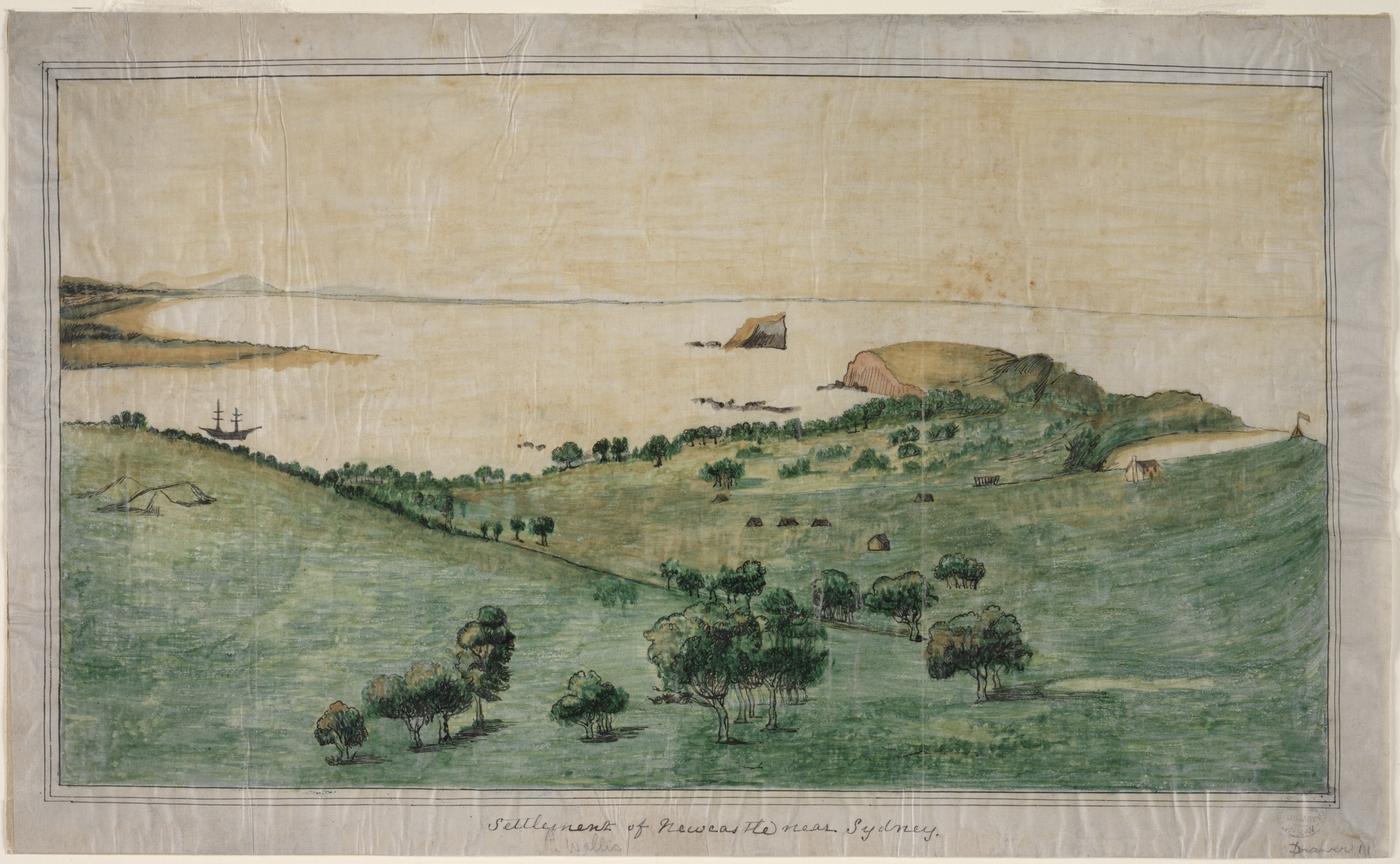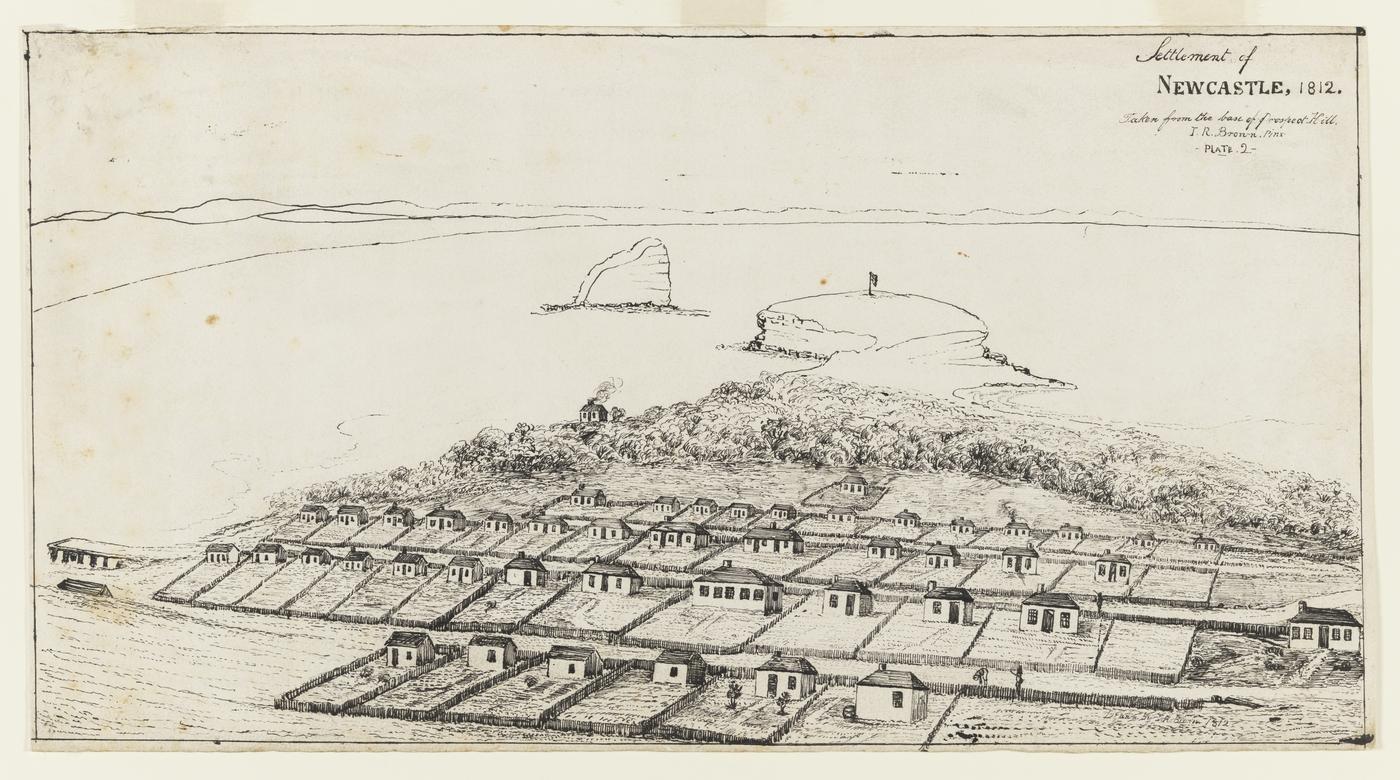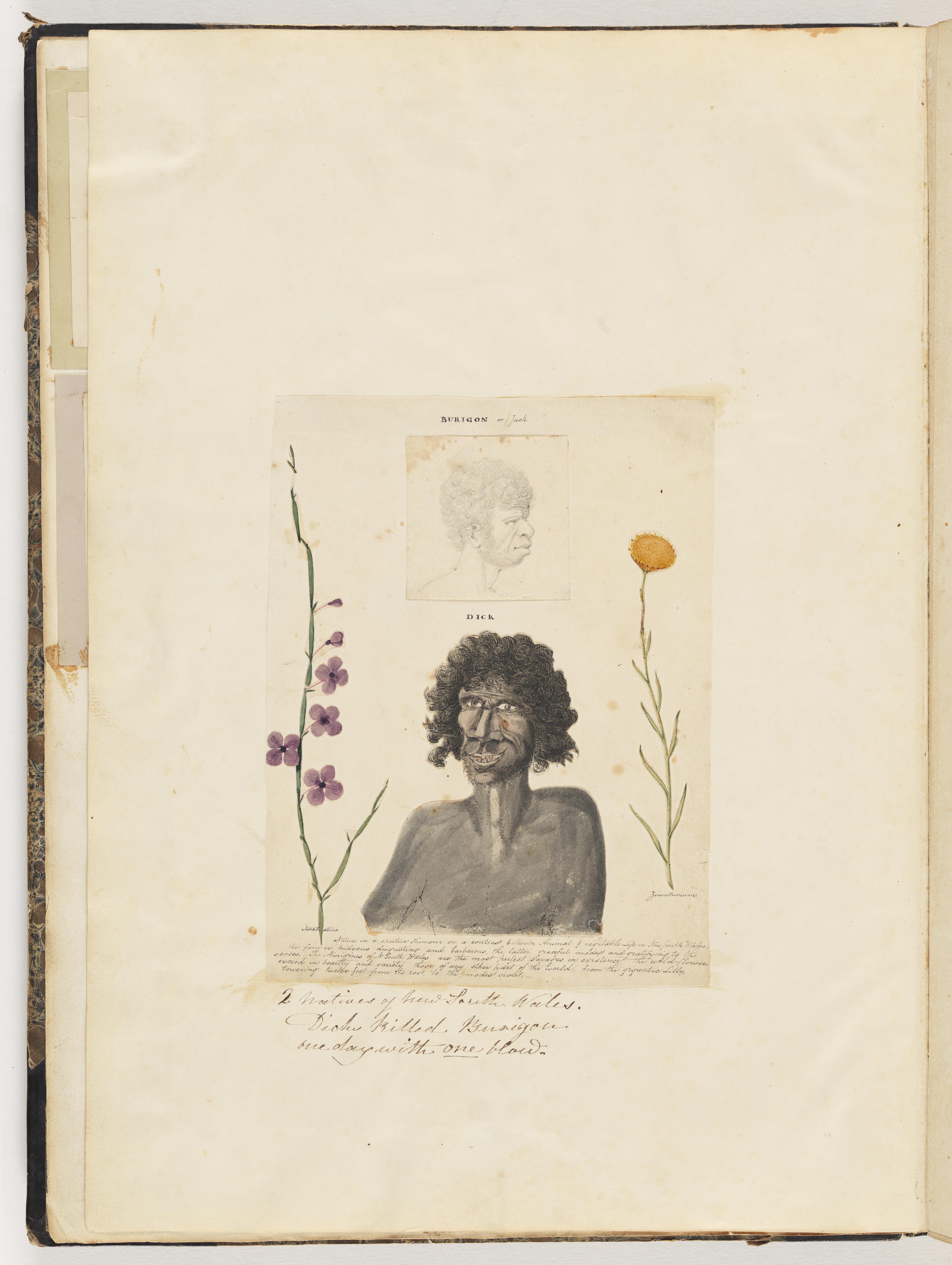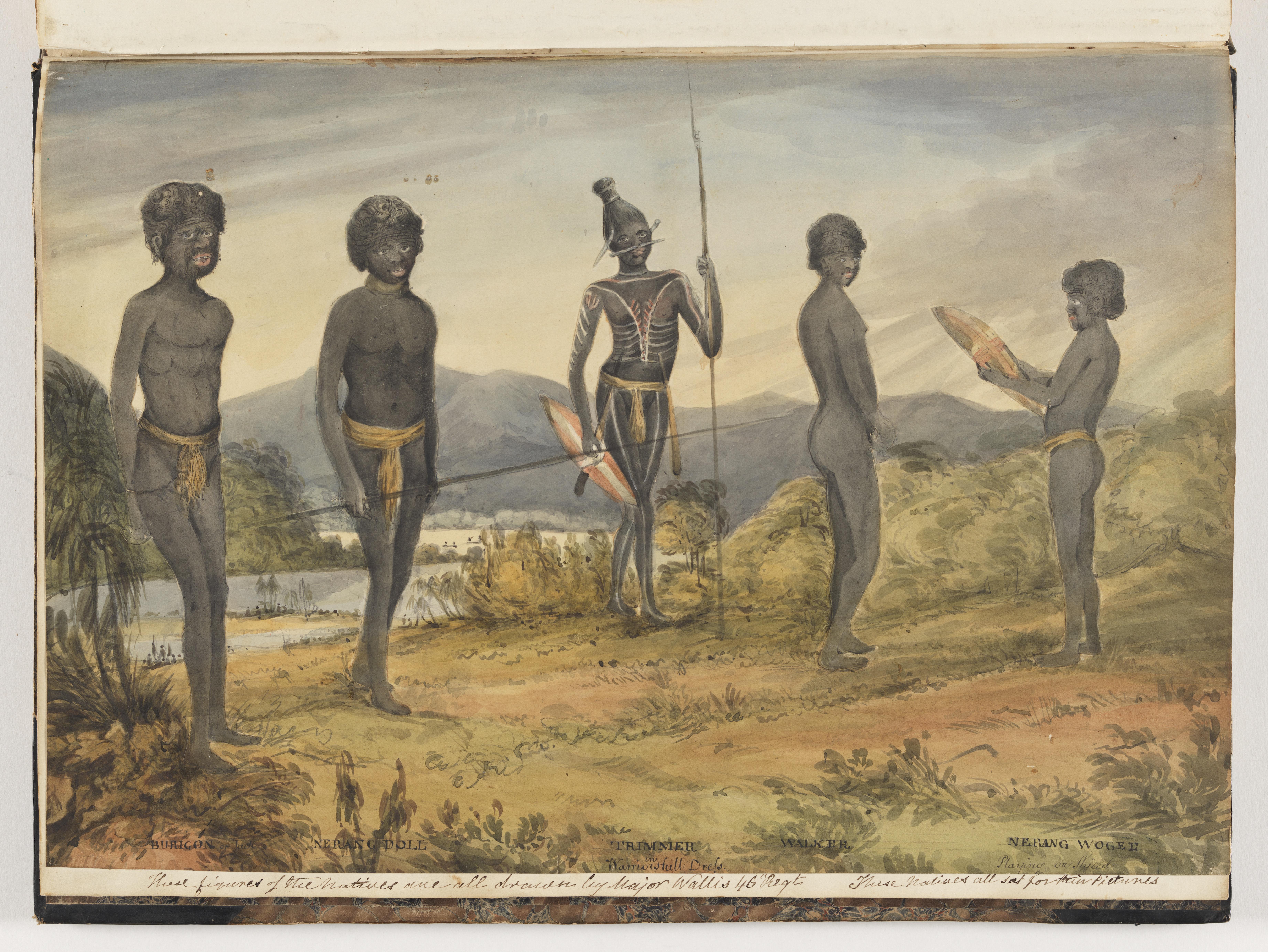Newcastle, just two hours north of Sydney, is a city emerging from a post-industrial slumber. With a thriving university, strong arts community and glistening beaches, the city is an increasingly popular choice for those escaping the hustle and bustle of Sydney.
Industry has shaped the city and its surrounds since the first years of the British settlement. At the mouth of the Hunter River, Newcastle has been a major coal port for more than 200 years and was, until the late 1990s, a steel production centre for BHP, its steelworks dominating the harbour.
Between 1804 and 1822, thousands of men and some women convicts were sent to Newcastle as punishment for transgressions in Sydney and elsewhere. The men laboured underground in the coal mines, cut trees in remote timber camps or dug up shells and burnt them for lime to feed Governor Macquarie’s building boom in Sydney. Newcastle gained a reputation as a dreaded place of excessive punishment, hard labour, isolated conditions and roaming bands of Aboriginal warriors on the lookout for escaping convicts.
At the same time, there’s no denying that the area’s beautiful natural setting made its penal establishment seem somewhat bucolic. The camp was bounded on the north by a large harbour dotted with islands, and mountains could be seen in the far distance to the west. Cleared areas of grassland on the hills around the settlement — named Sheep Pasture Hill and later Shepherds Hill by the British — were the product of thousands of years of work by local Aboriginal people. To the east, the sea rolled onto sandy beaches and rugged sandstone cliffs shot through with seams of black coal. It was a landscape captured in early paintings by John Lewin, Ferdinand Bauer and other colonial artists.
The penal station had been thrust onto the Country of the Awabakal and Worimi people, whose land covers what is now Newcastle, Stockton and the coast up to Port Stephens. Aboriginal people came and went through the embryonic town, fished on the harbour and along the river, and hunted in the nearby forests and grasslands. Some were employed by officers and ordinary soldiers as guides or hunting companions, or as trackers in pursuit of absconding convicts.
While surviving historical records suggest that clashes between Aboriginal people and the British around Newcastle were infrequent, soldiers were stationed at the remote camps to protect against potential attack. Groups of men working in the bush cutting timber or at lime burning sites were particularly vulnerable. As well as being isolated, these work parties wreaked the greatest destruction on Aboriginal Country as they felled trees and dug out ancient middens.
Along with this underlying tension, there was some co-operation and a measure of friendship, particularly between successive commandants and the local Aboriginal leader Burigon. The Library holds several paintings and sketches that attest to this bond. But these extraordinary images also prompt us to question how and why these relationships developed in a place of punishment and harsh labour.
In 1813 the convict artist T R (Richard) Browne assisted the Commandant Thomas Skottowe with the illustrated publication Select Specimens from Nature of the Birds and Animals of New South Wales compiled at Newcastle. Browne had arrived in Sydney as a convict from Dublin in 1810 and within a year had been sent to Newcastle, arriving in the penal station the same year as Skottowe.
Between 1811 and 1814, during Skottowe’s command, Browne illustrated the birds, fish and insects the commandant collected. Evidence of Skottowe and Browne’s connection with the local Aboriginal people can be found in Select Specimens from Nature. Its title page includes a scene at an Aboriginal camp, and the local Aboriginal names are included for each of the natural specimens Browne painted.
Remaining at Newcastle until 1817, Browne also contributed to an album of watercolours put together by Commandant James Wallis, who was in charge of the settlement from 1816 to 1818. And when he returned to Sydney, the artist made a series of naïve portraits of Aboriginal people, including the local Newcastle leader Burigon or Burgun and Cobbawn Wogi of Ash Island in the Hunter River estuary.
Burigon was well-known around the Newcastle camp. Wallis counted him as a friend and companion, and they often went out hunting and fishing together. He had kinder feelings for him, he wrote, than for many of his British kin. Burigon performed in a corroboree for Governor Macquarie and his party on an official visit to Newcastle in 1818.
As well as appearing in Browne’s painting, the Aboriginal leader features in a group portrait by Wallis of Aboriginal people of Newcastle and is portrayed by convict engraver Walter Preston standing to the side of a corroboree.
Burigon was probably a guide and companion to convict artist Joseph Lycett. Like Browne and Preston, the convict Lycett was taken under the patronage of James Wallis and asked to paint the penal camp and its surrounds. Lycett was put to work recording the town as it evolved through Wallis’ building program and capturing the life and customs of Aboriginal people. He painted at least 14 scenes that show Aboriginal people fishing, hunting, at play, at rest, and participating in corroborees and other traditional practices in and around Newcastle.
The details of cultural and traditional practices in Lycett’s paintings make them invaluable, as Professor John Maynard points out, for lifting the veil on an otherwise hidden past. It is unlikely that Lycett could have come so close to the local Aboriginal people without an invitation of some kind, and it is likely that Burigon was responsible for arranging it.
Burigon was a confidant and intermediary for Commandant James Wallis and it was Wallis who acted as Lycett’s patron in the camp. Burigon is shown in at least one of William Preston’s engravings, based on Lycett’s work. Wallis probably arranged for Burigon to work with Lycett to capture the life of the people who continued to live around the penal station.
However it was arranged, Lycett’s work shows a flipside to the harsh reality that he and other convicts experienced at Newcastle. Along with the work of Browne, Preston and Wallis, his portrayal of Aboriginal life in and around Newcastle is more detailed and revealing than any other depiction of a British outpost in colonial New South Wales.
Dr Mark Dunn was the Library’s 2016 CH Currey Fellow. His first book, The Convict Valley: The Bloody Struggle on Australia’s Early Frontier (Allen & Unwin, June 2020), is available from the Library Shop.




